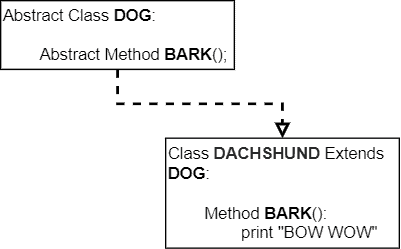1. 简介
随着面向对象编程范式的兴起,类、属性和方法等相关机制被广泛引入。在这其中,抽象方法(Abstract Methods)和虚方法(Virtual Methods)是两个非常重要的概念。
本文将深入探讨这两个概念。首先会回顾面向对象编程中的一些基础概念,然后分别介绍抽象方法和虚方法的定义与使用方式,最后对它们进行系统性对比,帮助你更好地理解它们之间的差异和应用场景。
2. 基础概念回顾
面向对象编程通过对象之间的交互来建模现实世界,这种范式带来了强大的表达能力,但也引入了不少复杂性。其中,抽象方法与虚方法的差异是许多开发者容易混淆的地方。
为了更好地理解抽象方法与虚方法,我们先来回顾几个关键的面向对象概念。
2.1 类(Class)
类是数据和方法的模板。它可以表示现实世界中的对象(如“汽车”),也可以表示一些抽象的概念(如“网络连接”)。
2.2 属性(Attribute)
属性表示类的状态或特征。例如,汽车类可以有“品牌”、“颜色”、“速度”等属性。
2.3 方法(Method)
方法是类的行为,即类可以执行的操作。例如,“启动汽车”、“加速”等。
2.4 对象(Object)
对象是类的具体实例。我们通过对象来访问类的属性和调用方法。
3. 抽象方法与虚方法详解
抽象方法和虚方法都是面向对象编程中方法的特殊形式,它们在继承机制中扮演重要角色,但行为和使用方式有显著区别。
3.1 抽象方法(Abstract Methods)
抽象方法是一种没有实现体的方法,它只声明方法的签名(名称和参数),不提供具体逻辑。
✅ 特点:
- 必须定义在抽象类(abstract class)中
- 子类继承抽象类时,必须实现所有未实现的抽象方法
- 抽象方法用于定义接口,强制子类实现特定行为
示例代码如下:
abstract class Animal {
abstract void makeSound();
}
class Dog extends Animal {
void makeSound() {
System.out.println("Bark!");
}
}
抽象方法就像一个模板,告诉子类:“你必须实现这个功能,但你自己决定怎么做”。
下图展示了抽象方法的工作机制:

3.2 虚方法(Virtual Methods)
虚方法是有默认实现的方法,子类可以选择是否重写(override)它。
✅ 特点:
- 虚方法在基类中提供了默认实现
- 子类可以重写该方法,但不是必须的
- 用于实现多态,支持运行时动态绑定
示例代码如下:
class Animal {
void makeSound() {
System.out.println("Animal sound");
}
}
class Cat extends Animal {
@Override
void makeSound() {
System.out.println("Meow!");
}
}
虚方法的作用是提供一个“默认行为”,同时允许子类根据需要进行定制。
下图展示了虚方法的继承与重写过程:

3.3 系统性对比总结
| 特性 | 抽象方法 | 虚方法 |
|---|---|---|
| 是否必须实现 | ✅ 是 | ❌ 否 |
| 是否有默认实现 | ❌ 否 | ✅ 是 |
| 是否必须重写 | ✅ 是 | ❌ 否 |
| 所在类类型 | 抽象类(abstract class) | 普通类或抽象类 |
| 多态支持 | ✅ 支持(需子类实现) | ✅ 支持(可重写) |
4. 总结
抽象方法和虚方法都是面向对象编程中实现多态的重要机制,但它们的使用场景和行为差异显著。
- 抽象方法用于定义接口行为,强制子类实现
- 虚方法提供默认实现,允许子类选择性地重写
- 两者都与继承和多态密切相关,是构建灵活类结构的关键工具
在实际开发中,选择使用抽象方法还是虚方法,取决于你希望子类如何继承和扩展父类的行为。如果你希望子类必须实现某个行为,使用抽象方法;如果你希望提供一个默认行为,同时允许子类灵活定制,使用虚方法更合适。
💡 踩坑提醒:Java 中没有显式的“virtual”关键字(不像 C#),所有非 private、非 static、非 final 的方法默认都是可重写的,因此在 Java 中虚方法的概念更隐式,需通过继承和 @Override 来体现。
掌握这两个方法的区别,有助于你在设计类结构时做出更合理的选择,提升代码的可维护性和扩展性。